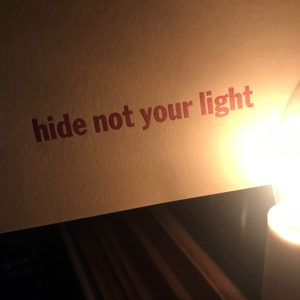Most every evening these days, Seth and I watch the blackbirds fly from west to east, from the mainland to the mangrove islands of the Lake Worth Lagoon. They do this in vast flocks, emerging from the western sky as far as the eye can see. Thousands and thousands of birds, moving both individually and as one great pull of life, not so unlike the massive school of fish that my neighbor Earl saw when he tells the story of the day he saw the Santa Margarita, the legendary Spanish galleon that sunk off our shores in the 1500s, from his boat above the surface of the Atlantic. As above, so below. While Earl’s fish were silent, the blackbirds flap and squawk. Yet both the fish and the birds move together in a great ballet as they ascend and descend in wondrous swoops. It’s an amazing thing to see.
And so the blackbirds are our guides these mysterious autumnal days, and they are our cover stars for the (finally!) published Convivio Book of Days calendar for November.
I won’t even bother to apologize for being so belated. When it’s on time, I like to think of the calendar as a companion to this blog. Well, ok… even when it’s late. It is a PDF document, printable on your home printer, on standard letter size paper. The photo for the month does not capture a vast blackbird flock, but rather a few stragglers that lighted above us on an Australian Pine, close to their nightly destination. The calendar comes to you in time for Martinmas this week, our point of closure to this annual time of remembering our beloved dead, and it comes to you in time for Thanksgiving later this month, and for Stir-Up Sunday, which leads us to the First Sunday of Advent at the end of November. Of course, that means that Christmas is not all that far away.
We love the anticipation of Advent as much as we do the joyous days that follow. And since typically at this time of year you’d find Convivio Bookworks locally at wonderful events like the Sankta Lucia Festival in Boca Raton that’s put on by the Swedish Women’s Educational Association, and the Christkindlmarkt at the American German Club in Lantana––events that are canceled this year––we’ve decided to shift our Autumn Stock-Up Sale to a Christmas Stock-Up Sale and instead, in a virtual way, bring these street fairs to you. Here’s the deal (and if you click the picture, you’ll make the visual larger):
So yes: at our catalog, take $10 off your purchase of $75 or more across our catalog, plus we’ll ship your domestic order for free. That’s a savings that totals $18.50, which is not too shabby. And there are so many fine things to choose from: traditional sparkly Advent calendars from Germany and handmade daily Advent candles from England to help mark daily the transition to Christmas; winter incense and traditional wooden artisan goods for Christmas from Germany and Sweden and Italy, including ornaments and incense burners and pyramids and nutcrackers (some vintage GDR!); sparkling painted tin ornaments and nativity sets from Mexico (one of them is a pop-up!), and our popular embroidered protective face masks from Chiapas (they make fine stocking stuffers); handmade soaps for Hanukkah and Christmas from our local soap maker Kelly Sullivan; fir balsam pillows that smell for all the world just like Christmas itself––they are from the Sabbathday Lake Shaker Community in Maine, who also offer you bags of their homegrown culinary lavender and their full selection of herbal teas and culinary herbs; letterpress printed books and broadsides that we make here in our workshop… oh and how about a Day of the Dead themed nativity set handmade in Mexico (one of our most popular items ever)?
Take a look around our catalog and see if we can’t help fulfill some of the shopping on your list (while saving you a bit of cash, too). Your transactions translate into real support for a very small company AND for other small companies, real families, local friends and family, and as for the Sabbathday Lake Shaker Community, well… they are the only remaining active Shaker Community anywhere, and America’s oldest religious community, established in 1783. All of the folks we work with are deserving of your support on this transactional basis, especially now, in strange, more challenging times. Companies like Amazon are enjoying record-breaking sales and profits right now… but it’s the little guys that are struggling to make ends meet. The small companies and artisans we work with appreciate every sale, like you wouldn’t believe. It’s just like voting. Purchasing what they make is your vote for them; it means you believe in what they do. Please consider supporting what we do so we can continue to support the artisans we know. And please take a look around at the small businesses in your area, too. Especially small family-run restaurants. They need your business to make it through to the other side of this.
My promise to you is to write Convivio Book of Days blog posts that describe, as best I can, the street fairs we’re missing this year, and we’ll keep that sale, with discount code STREETFAIR, going through the Christmas season, too.
Here’s a link to our catalog. Thank you for your support!




